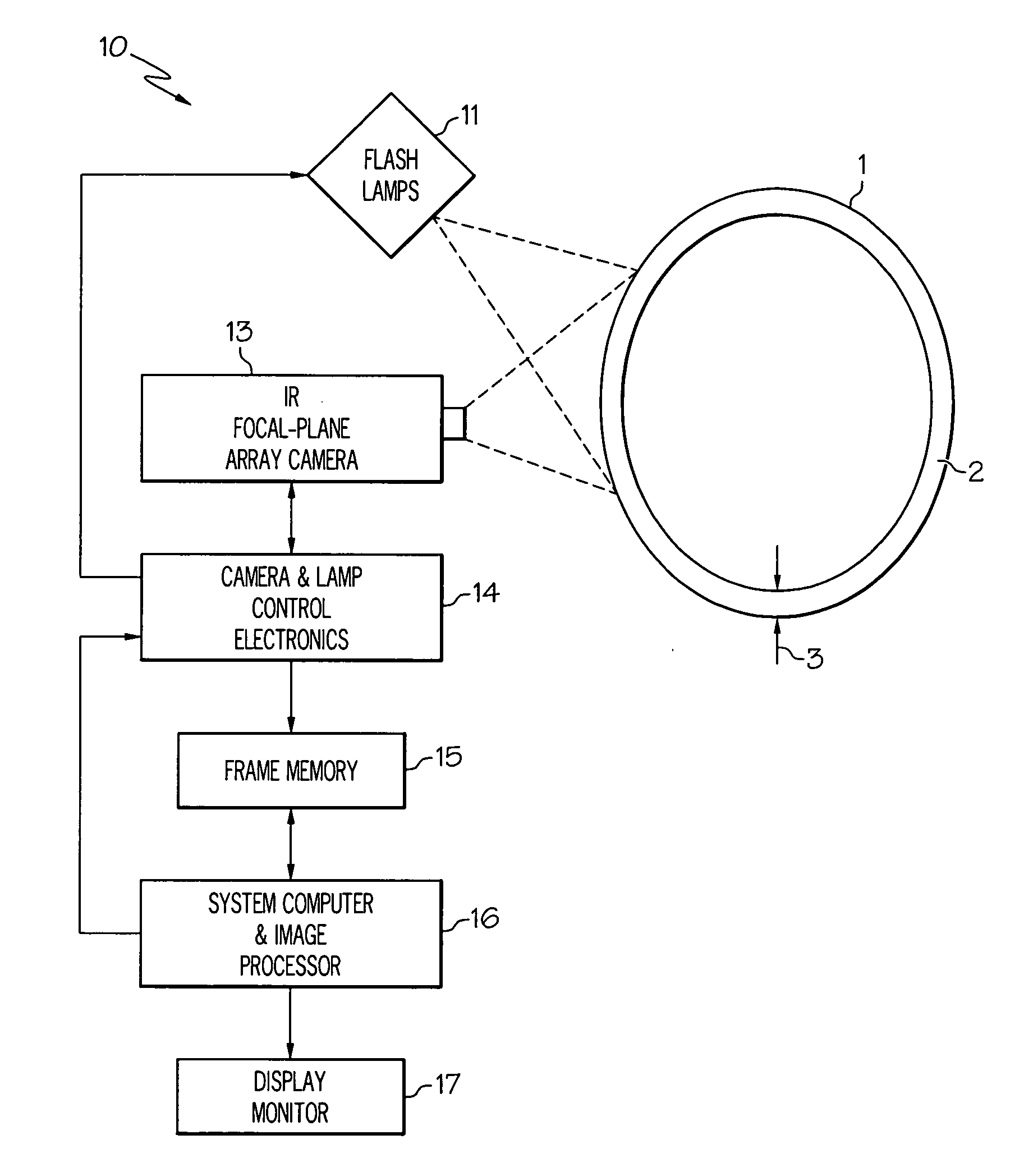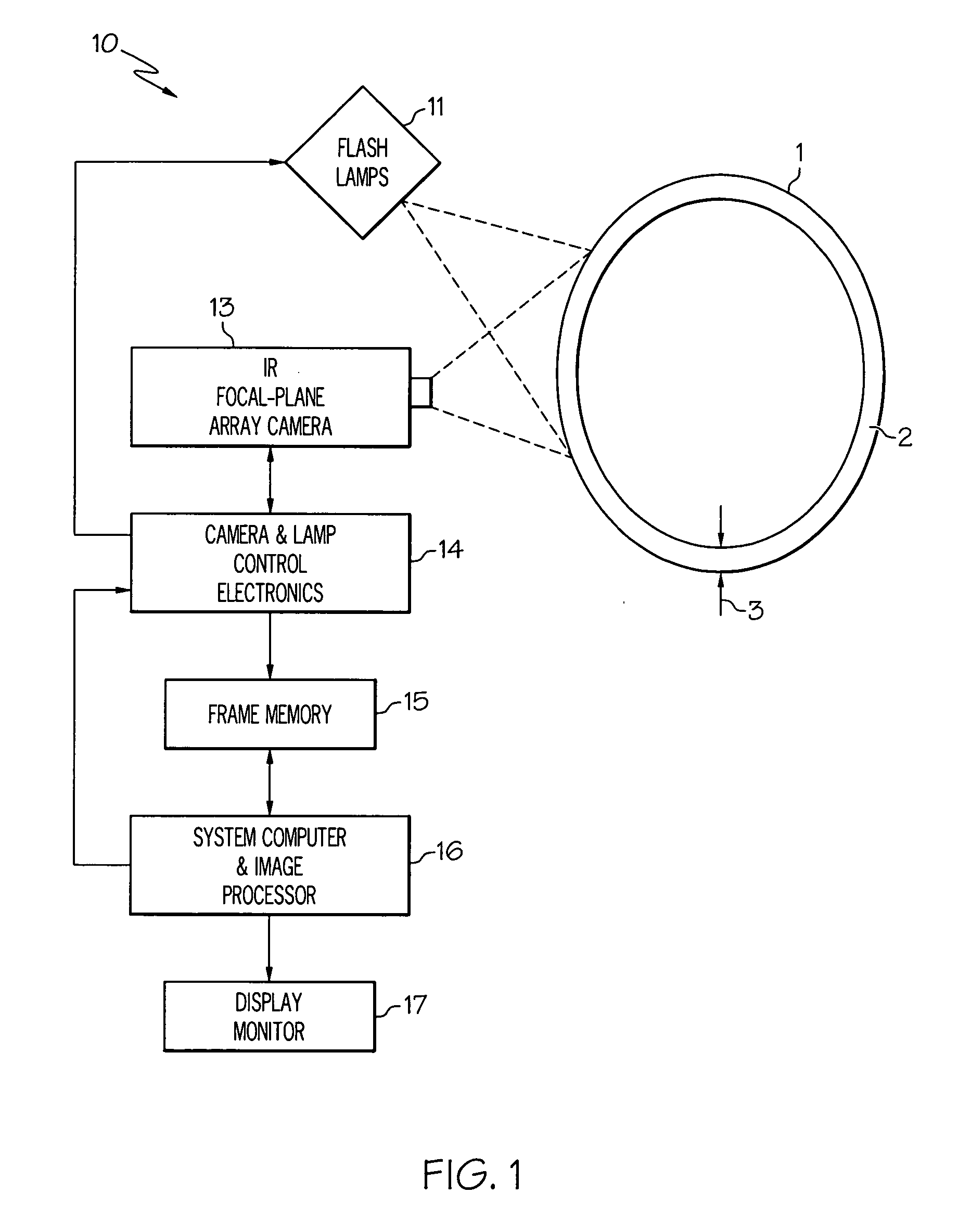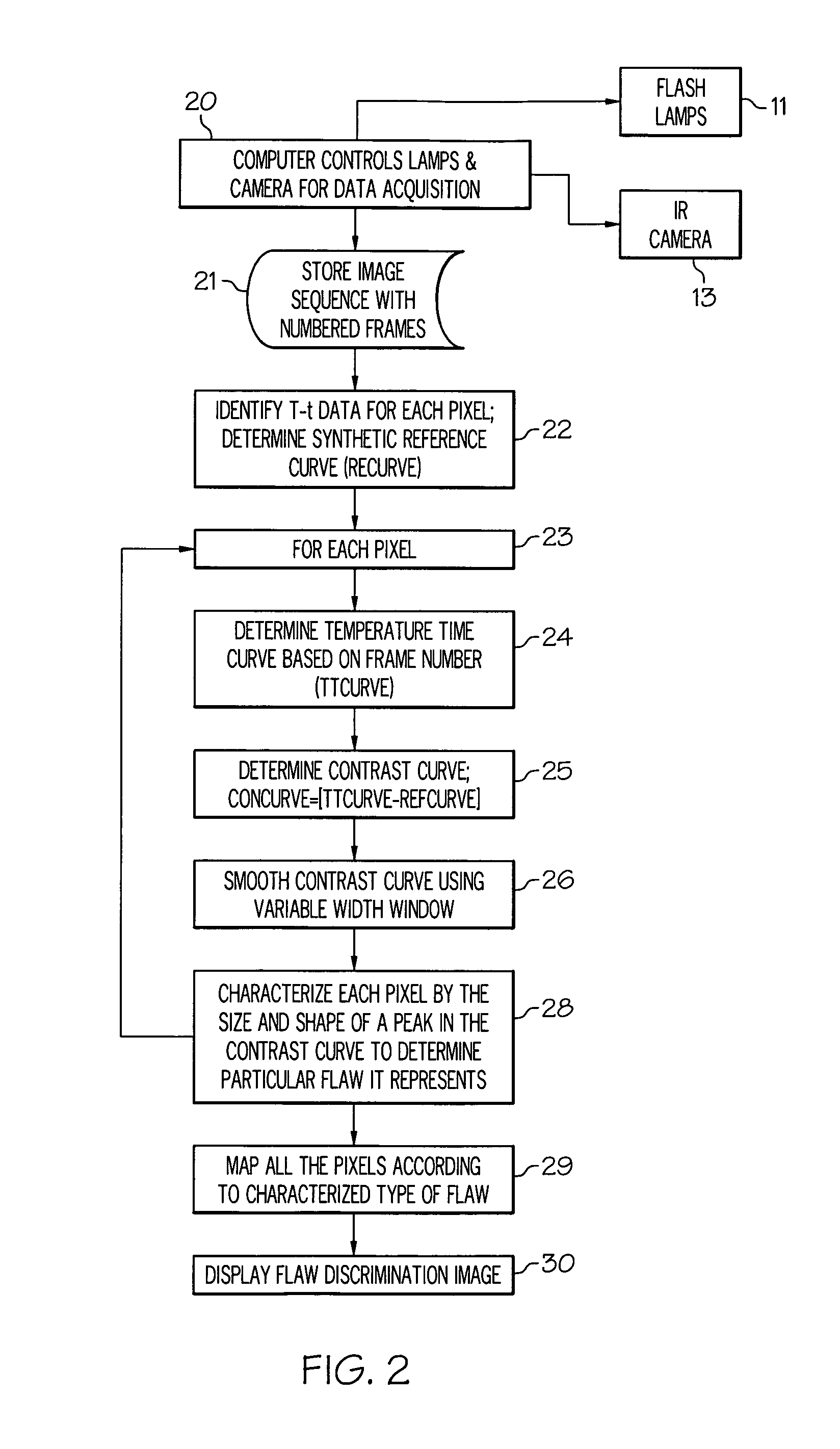Characterization of flaws in composites identified by thermography
a composite and thermography technology, applied in the field of thermography, can solve the problems of not identifying what types of flaws were found and not disclosing
- Summary
- Abstract
- Description
- Claims
- Application Information
AI Technical Summary
Benefits of technology
Problems solved by technology
Method used
Image
Examples
Embodiment Construction
[0025]Illustrated in FIG. 1 is an IR transient thermography system 10 for identifying and characterizing flaws, e.g. delaminations and porosity, in a composite object 1, e.g. a composite gas turbine engine combustor liner having a composite wall 2 of thickness 3. A flash-lamp heat-pulse source 11 is used to rapidly heat the surface of the object being analyzed. One suitable arrangement for flash-lamp heat-pulse source 11 would be, for example, a set of four or eight high-speed, high output power photographic flash-lamps, each capable of about 4.8 Kilo-joules output and having individual power supplies (such as, for example, flash-lamps manufactured by Speedotron, Corp. in Chicago, Ill.).
[0026]An exemplary infrared transient thermography method for determining and characterizing flaws in articles made of composite materials is outlined in blocks of a flow chart illustrated in FIG. 2 and using the system illustrated in FIG. 1. Surface temperature measurements of heat-pulse illuminated...
PUM
 Login to View More
Login to View More Abstract
Description
Claims
Application Information
 Login to View More
Login to View More - R&D
- Intellectual Property
- Life Sciences
- Materials
- Tech Scout
- Unparalleled Data Quality
- Higher Quality Content
- 60% Fewer Hallucinations
Browse by: Latest US Patents, China's latest patents, Technical Efficacy Thesaurus, Application Domain, Technology Topic, Popular Technical Reports.
© 2025 PatSnap. All rights reserved.Legal|Privacy policy|Modern Slavery Act Transparency Statement|Sitemap|About US| Contact US: help@patsnap.com



